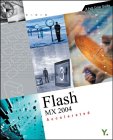 More Eric Meyer on CSS is the latest book from the world-recognized guru of CSS, Eric Meyer. It is from New Riders Voices that Matter series.
More Eric Meyer on CSS is the latest book from the world-recognized guru of CSS, Eric Meyer. It is from New Riders Voices that Matter series.
This book is so much fun! I don’t know when I have had such a good time reading a book. Reading it is like finding a small door to a hidden tunnel that whisks you into the brain of Eric Meyer. But unlike the movie “Being John Malkovich,” the magical tunnel doesn’t allow you to enter Eric Meyer’s brain and take it over. It allows Eric Meyer to take over your brain, revealing his thought process, his problem solving style, his design approach, his knowledge. No, More Eric Meyer on CSS is not the magical realism of the movies. It is the practical application of CSS to solve real-world design requirements.
The book is not for CSS beginners. The assumption is that you know the basics and that something like
#sidebar h4, #sidebar ul {margin: 0 6px 0 0;}
already makes sense to you. Meyer takes on ten design projects. They are: converting an existing page, styling a photo collection, styling a financial report, positioning in the background, list-based menus, CSS-driven drop-down menus, opening the doors to attractive tabs, styling a weblog, designing a home page, and designing in the garden (the CSS Zen Garden, that is). For each project, Meyer provides the design requirements, sets you up with images and files, and then works through each one of the design problems and shows you one (or several) methods of using CSS to meet the requirement.
During one phase of my career, I had a couple of contracting jobs at IBM and was struck by the awesome reverence the programmers had for those rare programming stars among them who wrote “elegant” code. No false trails, no unneeded loop-de-loops, just graceful effective code. Meyer writes CSS like that–graceful and elegant–and you get to be inside his brain as he does it. You get to go though it with him, think his graceful and elegant thoughts–soak in them, bask in them, learn to use them for your own design requirements. I repeat myself and say that this book was fun to read and do.
Do I recommend this book? Yeah, about 110%.
 Digital Media Tools
Digital Media Tools Flash MX 2004 Accelerated
Flash MX 2004 Accelerated Dreamweaver MX 2004 Accelerated
Dreamweaver MX 2004 Accelerated
